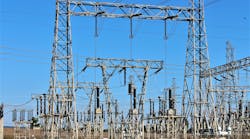Two months ago in this column, we explored a future microgrid. Last month, we looked at a future distribution utility. Now let’s take a peek at a future residential customer.
Like most nights, Joshua ended up in his study. His wife, Sara, had retired to the bedroom to do some “light” reading. Joshua did not consider her reading particularly light. A quantum physicist at the university, whenever she tried to discuss her efforts to use genetically engineered viruses to modify the photosynthesis process in order to produce highly efficient solar power, Joshua typically glazed over. Of course, when Joshua attempted to explain options, swaps, futures, hedges and other aspects of his financial advisor world, she would return the favor.
As he slid into his favorite chair, Joshua used the TV control app on his smart phone to turn on the ultra-high-definition flat screen. After a brief moment, Joshua’s home page appeared. On one display, he could look at email, calendar, voice mail, various articles, music, videos and home management.
He used his smart phone to zoom in on the house manager section. The app immediately displayed all the major systems of his house, including security, health, fire, communications, water and energy. He saw that all major appliances and systems in his house were operating in the green and that all the doors and windows were secure. He also noted that the upstairs AC would need a new filter soon.
Joshua noted that the energy section was pulsing slowly. He zoomed in on the section and saw the monthly energy report. Joshua opened the report and saw the monthly results summarized in a color-coded horizontal stacked bar graph.
On the left was his energy consumption, separated by usage type such as space conditioning, appliances, electric vehicles, lighting and other. On the right was the energy produced by his wind and solar assets. Since it was springtime and heating and cooling were near zero, the resulting total usage was low. On the production side, the wind in particular was high. The net result was an energy surplus and a much lower bill.
Joshua next looked at the cumulative totals for the year. Because of the ongoing sunny and mild weather conditions, energy production was up, consumption was down, and their carbon emissions were well under budget. Sara would like that. Joshua was glad to see total energy costs still below budget.
When they had moved into their house, they had originally wanted to install solar on their rooftop. But the solar installer had said that a centuries-old oak tree would have to go for the PV to work. That was not going to happen.
Seeking another solution, Joshua had contacted one of the new whole-home service providers. On top of bundling broadband, security and home automation services, the company also worked with several energy aggregators. After filling out an online survey that gathered information about the house, their appliances, electric vehicles, desire for green energy and their work schedules, Joshua received proposals from several aggregators.
One proposal had stood out for Joshua. The aggregator had recommended buying into a new wind and solar development in the western part of the state. Using the projected consumption profile developed from the survey, the aggregator had recommended a purchase size that would optimize Joshua’s cost goals and Sara’s carbon concerns.
Since the couple had indicated that reliability was important, the aggregator also recommended that they sign up for a leased storage option offered by the local distribution company. Installed next to the company’s transformer, the battery bank served as a back-up power supply and would provide something called demand response when the grid needed help. When used by the grid, Joshua received a credit on his bill.
Now two years later, Joshua was still intrigued by the way the wind and solar worked in combination. Located in the drier and less cloudy part of the state, the solar produced more energy on average and at a lower cost than if a comparable system had been located on his rooftop.
Additionally, the wind in that part of the state blew harder at night. This complemented the solar production and matched up with the charging of their electric cars. Because of their variability, Joshua understood that the wind and solar could not meet all their requirements. When needed, the aggregator purchased additional energy services from the wholesale market.
Joshua liked to think of this arrangement as his energy portfolio, in that it used diverse investments to mitigate risk and meet their overall energy objectives. Satisfied that everything was in order, Joshua settled in to watch a Smithsonian documentary.
Too much? Perhaps. But consider that the California ISO has started a pilot that will allow homes to bid demand response into its energy market. Also, consider that the municipal utility in Glasgow, Kentucky, is deploying storage for demand response purposes. Finally, consider how the cost of utility-scale and community solar continues to reach new lows. Time will tell.
Do you see it differently? We’d like to hear from you.


